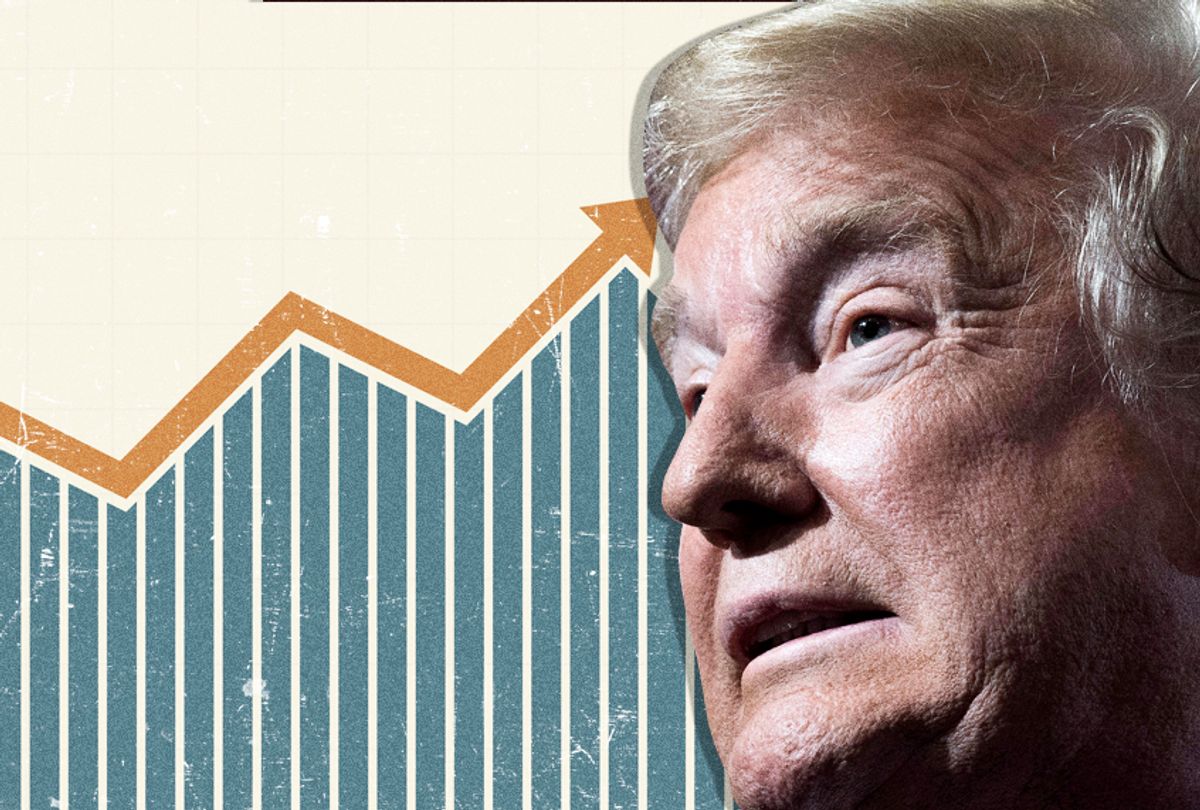Donald Trump, along with his eldest son, was ecstatic when the Commerce Department reported that the economy grew 4.1 percent last month. Donald Jr. insisted (wrongly) that GDP growth had never even passed 2 percent under President Obama. Trump himself pronounced the number “amazing.”
No one should claim that 4.1 percent is not impressive growth, but it is far from unprecedented. Nor was it an especially big surprise.
First, GDP data are often erratic. Bad quarters tend to be followed by unusually good quarters and vice versa. For example, after the economy shrank at a 1 percent rate in the first quarter of 2015, it then grew at a 5.1 percent rate in the second quarter and 4.9 percent in the third quarter.
Quarters with more than 4 percent growth are actually not rare. There were eight quarters with better than 4 percent GDP growth in the 2000s and fourteen in the 1990s. Jimmy Carter managed to have a quarter clocking in with 16.4 percent growth, four times Trump’s “amazing” number.
The growth was also hardly a surprise. If we average in the first quarter’s 2.2 percent figure with the second quarter growth number we get 3.2 percent growth for the first half of 2018, a hair less than the 3.3 percent rate that the Congressional Budget Office predicted for the full year four months ago.
Trump’s tax cuts did provide some boost to growth as the rich people who got the money spent much of it. The left-of-center economists who opposed the tax cuts didn’t doubt that rich people could spend money, we argued that there were better things to do with $1.5 trillion than to give still more money to the richest people in the country.
But Trump’s team didn’t sell the tax cut by arguing for the need to improve the living standards of the rich. They argued that the tax cut would lead to higher pay for the country’s workers.
We clearly are not seeing any acceleration in pay growth to date, with the rate of wage growth just keeping pace with inflation. But the story of the tax cut was not supposed to be one of short-term pay rises.
Rather the story was supposed to be that the tax cut would spur investment. More investment would lead to more rapid productivity growth. This would, in turn, be passed on to workers in higher wages.
Those looking for the evidence of the promised investment boom will not find it in the second quarter GDP data. Non-residential investment grew at a 7.3 percent annual rate in the second quarter. This is respectable, but hardly the sort of boom promised by tax cut proponents.
Even this figure looks less impressive on closer inspection. Spending on new equipment, the largest component of investment, rose at just a 3.9 percent rate. The biggest factor in the quarter’s investment figure was a 13.3 percent rate of growth in investment in structures.
The structure investment, in turn, was driven overwhelmingly by a surge in mining-related construction, such as oil and gas drilling, which increased at a 97.1 percent annual. While this may have been partly due to the Trump administration’s drill everywhere policy, by far the biggest factor is the rise in world energy prices. In response to a post-recession bounce back in world energy prices, spending in this category grew at 84.5 percent and 65.9 percent annual rates in the third and fourth quarters of 2010, respectively, back when Obama was still enforcing environmental regulations.
In short, we are seeing no serious evidence of the sort of investment boom promised by the proponents of the Trump tax cut. To hit their targets for wage growth and productivity growth we would need to see investment increased by more than 30 percent from 2017 levels, not the mid-single digit growth we saw in the first quarter.
There is nothing “amazing” about the second quarter GDP data. We are not seeing any more growth than had generally been predicted by economists at the time of the tax cut’s passage. And, we see very little reason to believe that workers will see the sort of wage dividend promised by proponents of the tax cut.
It still looks like the vast majority of the tax cut will go into the pockets of the very rich. And, in Donald Trump’s US, that is hardly amazing.
Copyright © Truthout. Reprinted with permission.



Shares